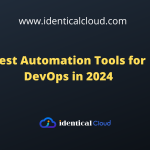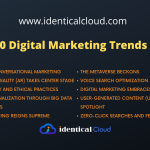A Catalog of ISO Standards for AI Security
A Catalog of ISO Standards for AI Security
As artificial intelligence (AI) rapidly transforms our world, concerns about its security and ethical implications become ever more pressing. Fortunately, the International Organization for Standardization (ISO) is leading the charge with a growing catalog of standards aimed at ensuring responsible and secure AI development and deployment.
Why are ISO Standards for AI Security Important?
- Minimize risk: AI systems can be vulnerable to bias, manipulation, and cyberattacks. ISO standards provide frameworks to identify and mitigate these risks, fostering trust and safeguarding against unintended consequences.
- Build confidence: Standardized guidelines create a level playing field for developers and businesses, assuring consumers and stakeholders that AI is developed and used responsibly.
- Compliance and regulations: Some countries and industries are already mandating AI compliance with specific ISO standards. Understanding these standards helps organizations stay ahead of the curve and avoid legal ramifications.
Navigating the Landscape:
- ISO/IEC 27001
- This “gold standard” for information security management systems (ISMS) lays the foundation for secure AI development.
- It outlines a framework for identifying, assessing, and mitigating information security risks, which can be adapted to the specific context of AI systems.
- Organizations implementing ISO/IEC 27001 for their AI development can benefit from:
- Structured risk management: A systematic approach to identifying and managing AI-specific security threats like bias, explainability, and adversarial attacks.
- Enhanced data security: Strong controls for data acquisition, storage, processing, and deletion, safeguarding sensitive data used in AI models.
- Continuous improvement: A cyclical process for monitoring, reviewing, and improving security measures throughout the AI lifecycle.
- Structured risk management: A systematic approach to identifying and managing AI-specific security threats like bias, explainability, and adversarial attacks.
2. ISO/IEC TR 24030
- This technical report delves deeper into the specific risks associated with AI systems.
- It provides a taxonomy of AI risks across different stages of the AI lifecycle, from design and development to deployment and operation.
- Organizations can utilize this report to:
- Conduct AI risk assessments: Identify and analyze potential risks specific to their AI projects, considering factors like the intended use of the AI, the type of data it uses, and its potential impact on individuals and society.
- Develop risk mitigation strategies: Tailor responses to address identified risks by implementing appropriate controls and safeguards.
- Promote transparency and accountability: Document the risk assessment process and mitigation strategies to demonstrate responsible AI development and build trust with stakeholders.
- Conduct AI risk assessments: Identify and analyze potential risks specific to their AI projects, considering factors like the intended use of the AI, the type of data it uses, and its potential impact on individuals and society.
3. ISO/IEC AWI 27090
- This draft standard takes a head-on approach to security threats and vulnerabilities in AI systems.
- It provides concrete guidance on how to address these threats throughout the AI lifecycle, including:
- Security requirements during AI design and development: Recommendations for secure code development practices, robust model training methodologies, and vulnerability assessments.
- Security measures for AI deployment and operation: Techniques for monitoring AI systems for anomalous behavior, implementing intrusion detection and prevention systems, and ensuring secure logging and auditing.
- Incident response and recovery: Steps to take in case of security breaches or malfunctions in AI systems, minimizing harm and restoring operations promptly.
- Security requirements during AI design and development: Recommendations for secure code development practices, robust model training methodologies, and vulnerability assessments.
4. ISO/IEC TR 5469
- This technical report focuses specifically on functional safety in AI systems, crucial for applications where system failures can have severe consequences.
- It provides guidance on:
- Risk assessment for AI systems in safety-critical applications: Identifying and analyzing potential hazards and failures associated with AI components and their impact on overall system safety.
- Safe AI design and development: Techniques for implementing fail-safe mechanisms, ensuring redundancy and resilience in AI systems, and verifying their safety performance.
- Integration of AI into safety-critical systems: Guidelines for managing the transition from traditional safety-critical systems to those incorporating AI components.
- Risk assessment for AI systems in safety-critical applications: Identifying and analyzing potential hazards and failures associated with AI components and their impact on overall system safety.
Other relevant standards
- ISO/IEC 20887 (human-centered design): Ensuring AI systems are designed with user needs and well-being in mind.
- ISO 38000 (governance of organizations): Providing principles for good governance practices within organizations developing and deploying AI.
- ISO/IEC TR 42197 (ethics of intelligent systems): Addressing ethical considerations throughout the AI lifecycle, including fairness, transparency, and accountability.
The Future of AI Security Standards:
- Continuous evolution: The ISO is actively developing and revising new standards to keep pace with the rapid advancements in AI technology.
- International collaboration: Harmonization of AI security standards across different countries is crucial for global adoption and effectiveness.
- Industry-specific needs: Tailored standards for specific sectors like healthcare, finance, and transportation are under development to address unique risk profiles.
Navigating this catalog of ISO standards can be overwhelming. However, by staying informed about their development and engaging with stakeholders, organizations can leverage these valuable tools to build secure, ethical, and trustworthy AI systems for a brighter future.
Additional Recommendations:
- Stay updated on the latest ISO standards for AI security by visiting the ISO website and attending relevant workshops and conferences.
- Participate in the standardization process by providing feedback and joining relevant working groups.
- Engage with other organizations and stakeholders to share best practices and promote responsible AI development.
By understanding and implementing these emerging ISO standards, organizations can take a proactive approach to building secure, trustworthy, and ethical AI systems. This will not only mitigate risks and ensure compliance but also foster public trust and pave the way for a future where AI benefits everyone.








